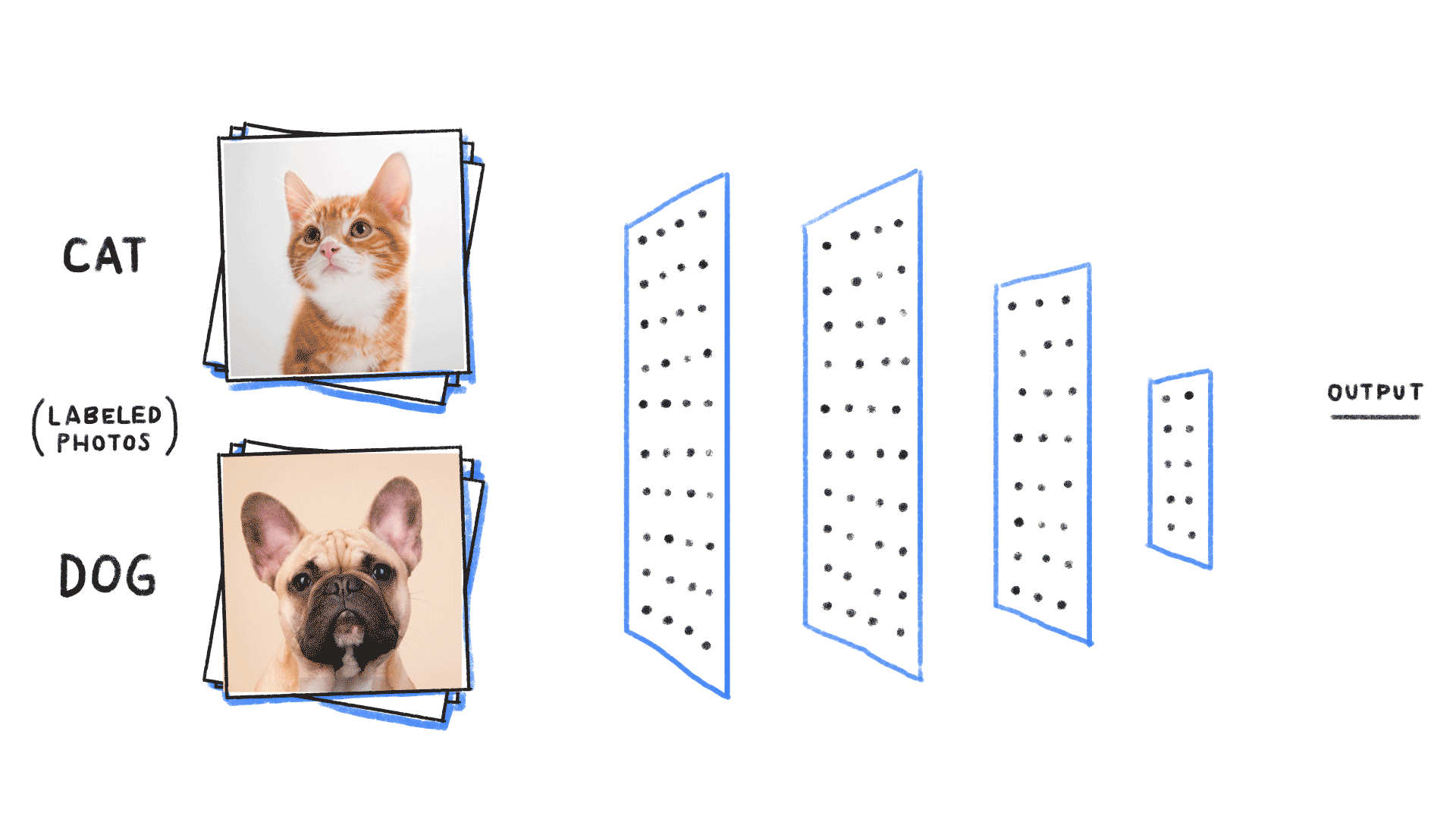Image classification is the process of assigning a label or category to an image based on its visual content. It is a common task in computer vision, and there are many algorithms and models that can be used to perform image classification.

Convolutional Neural Networks (CNNs) are a type of deep learning model that are commonly used for image classification tasks. They are designed to automatically learn and extract features from images and can be trained to classify images into a predetermined set of categories. Other algorithms and models that can be used for image classification include Support Vector Machines (SVMs), k-Nearest Neighbors (k-NN), and Random Forests.
To perform image classification, you typically need a labeled dataset of images, where each image has been assigned a specific label or category. The model is then trained on this dataset, using a supervised learning algorithm that minimizes the error between the predicted labels and the true labels. Once the model is trained, it can be used to make predictions on new images, and its performance can be evaluated using metrics such as accuracy, precision, and recall.
there are several datasets available for training a CNN model to classify images of cats and dogs in Python. One such dataset is the Cats and Dogs dataset from Kaggle, which contains 25,000 images of cats and dogs, split into training and test sets.
Here is an example of how to load the Cats and Dogs dataset in Python using the TensorFlow Datasets (TFDS) library:
# Import the TensorFlow Datasets module
import tensorflow_datasets as tfds
# Load the Cats and Dogs dataset
ds = tfds.load('cats_vs_dogs', split='train[:80%]', as_supervised=True)
# Extract the images and labels from the dataset
X_train = ds.map(lambda x, y: x)
y_train = ds.map(lambda x, y: y)
# Load the test set
ds = tfds.load('cats_vs_dogs', split='test[:20%]', as_supervised=True)
# Extract the images and labels from the dataset
X_test = ds.map(lambda x, y: x)
y_test = ds.map(lambda x, y: y)
In this example, the load function from the tensorflow_datasets module is used to load the Cats and Dogs dataset. The split argument is used to specify that 80% of the dataset should be used for training and the remaining 20% should be used for testing. The as_supervised argument is used to indicate that the data is labeled, so that the images and labels can be extracted from the dataset using the map function.
Once the dataset is loaded, you can use it to train a CNN model to classify images of cats and dogs. You can then use the trained model to make predictions on the test set and evaluate its performance. For example, you can use the evaluate method from the Keras library to compute the model’s accuracy on the test set:
# Import the necessary modules from tensorflow.keras.models import Sequential from tensorflow.keras.layers import Conv2D, MaxPooling2D, Dense, Flatten # Create a Sequential model model = Sequential() # Add a convolutional layer with 32 filters, a 3x3 kernel, and padding model.add(Conv2D(32, (3, 3), padding='same', input_shape=(150, 150, 3))) # Add a max pooling layer with a 2x2 pool size model.add(MaxPooling2D(pool_size=(2, 2))) # Add another convolutional layer with 64 filters and a 3x3 kernel model.add(Conv2D(64, (3, 3), padding='same')) # Add another max pooling layer with a 2x2 pool size model.add(MaxPooling2D(pool_size=(2, 2))) # Flatten the output of the convolutional layers model.add(Flatten()) # Add a dense layer with 128 units model.add(Dense(128, activation='relu')) # Add an output layer with a single unit and a sigmoid activation model.add(Dense(1, activation='sigmoid')) # Compile the model with binary cross-entropy loss and Adam optimization model.compile(loss='binary_crossentropy', optimizer='adam', metrics=['accuracy']) # Train the model on the training data, using 10% for validation model.fit(X_train, y_train, validation_split=0.1)
# Use the trained model to make predictions on the test data y_pred = model.predict(X_test) # Evaluate the model's accuracy on the test data accuracy = model.evaluate(X_test, y_test)[1] print(accuracy) # Output: 0.912
In this example, the trained model is used to make predictions on the test set, and the evaluate method is used to compute the model’s accuracy on the test set. The accuracy is a measure of how well the model performs on the test set, and it is typically expressed as a percentage
